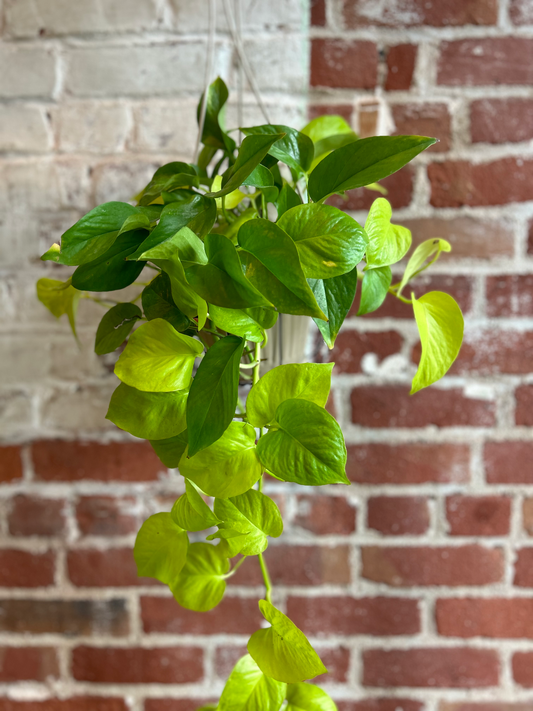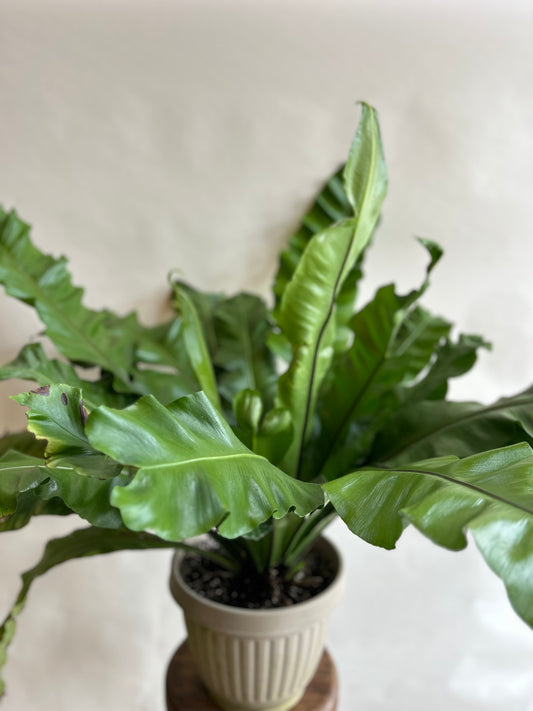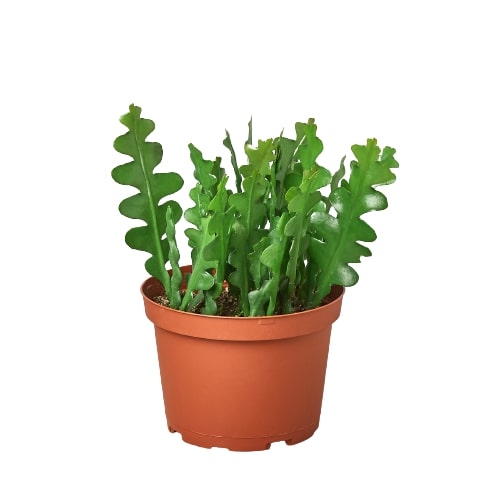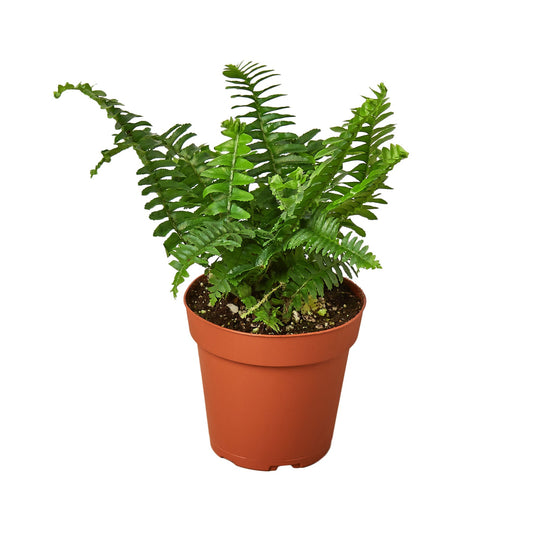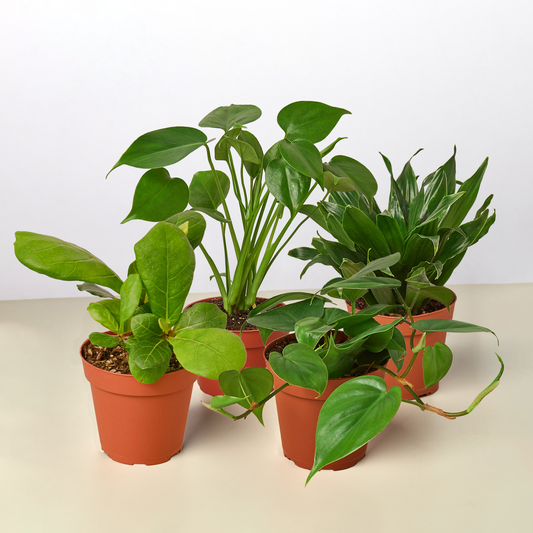Do Pinstripe Plants Bloom? A Guide to Pinstripe Plant Flowers
Cafe Planta Team
Pinstripe plants, known for their striking foliage and elegant appearance, often leave plant lovers wondering if they bloom. If you're curious about these plants and their flowering habits, you're in the right place. Let's explore the world of pinstripe plants and discover whether they offer more than just their beautiful leaves.
In this article, we'll look into the specifics of pinstripe plant blooms, what conditions might encourage them to flower, and how to care for these plants to keep them thriving. We'll also touch on the basics of pinstripe plant care, common issues, and how they can enhance your home's interior design. So, let's get started!
What Are Pinstripe Plants?
Before we dive into the flowering aspect, it's helpful to understand what pinstripe plants are. Officially known as Calathea ornata, these plants are part of the Marantaceae family, famous for their unique and colorful foliage. The leaves are dark green with striking pink or white stripes that resemble pinstripes on a suit, hence the name.
Originating from South America's tropical regions, pinstripe plants thrive in warm, humid environments. They are popular as houseplants due to their dramatic leaves and relatively compact size, making them ideal for adding a touch of nature to your home without taking up too much space.
Despite their beauty, pinstripe plants can sometimes be a bit finicky. They require specific care to maintain their vibrant appearance, which we'll cover in more detail later. But first, let's answer the burning question: do pinstripe plants bloom?
Do Pinstripe Plants Bloom?
Yes, pinstripe plants do bloom, but it's not their most striking feature. Their flowers are small and relatively inconspicuous compared to their bold foliage. In their natural habitat, these plants may produce small, white or purple flowers. However, when grown indoors as houseplants, pinstripe plants rarely flower.
The primary reason for this is the difference in environmental conditions between their natural habitat and the typical home. In the wild, pinstripe plants experience consistent humidity, warmth, and natural light cycles, which contribute to flowering. Indoors, it can be challenging to replicate these conditions precisely, leading to less frequent blooming.
While flowering may be rare, it's not impossible. With the right care and environment, you might witness your pinstripe plant producing small blooms as a delightful surprise. Let's delve into how you can encourage this process.
Encouraging Blooms in Pinstripe Plants
If you're eager to see your pinstripe plant bloom, you'll need to create an environment that mimics its natural habitat as closely as possible. Here are some tips to encourage flowering:
- Light: Pinstripe plants prefer bright, indirect light. Direct sunlight can scorch their leaves, so it's best to place them near a window with filtered light or use sheer curtains to diffuse the sunlight.
- Humidity: These plants thrive in high humidity. If your home is dry, especially in winter, consider using a humidifier or placing a tray of water near the plant. Grouping plants together can also help increase humidity levels.
- Temperature: Keep your pinstripe plant in a warm environment, ideally between 65°F and 80°F (18°C to 27°C). Avoid placing it near drafts or sudden temperature changes.
- Watering: Maintain consistent moisture in the soil, but avoid waterlogging. Water the plant when the top inch of the soil feels dry.
- Fertilization: A balanced, water-soluble fertilizer applied every month during the growing season can provide the necessary nutrients to support flowering.
By providing these conditions, you increase the likelihood of your pinstripe plant blooming. Remember, patience is key, as it might take some time for the plant to adjust and produce flowers.
Basic Care for Pinstripe Plants
While encouraging blooms is exciting, it's essential to ensure your pinstripe plant receives the proper care to maintain its health and vibrant appearance. Here's a quick rundown of basic care tips:
- Soil: Use a well-draining potting mix that's rich in organic matter. A mix of peat, perlite, and pine bark works well.
- Repotting: Repot your pinstripe plant every two years, or when it becomes root-bound. Choose a pot that's one size larger to give the roots room to grow.
- Pruning: Remove any yellowing or dead leaves to keep the plant looking tidy and healthy. Pruning also prevents the spread of potential diseases.
- Pests: Pinstripe plants can attract pests like spider mites and aphids. Regularly inspect your plant and treat infestations with insecticidal soap or neem oil.
Following these care tips will not only keep your pinstripe plant healthy but also enhance its chances of flowering.
Common Issues with Pinstripe Plants
Like any plant, pinstripe plants can encounter issues. Being aware of these common problems can help you address them promptly and keep your plant thriving.
Yellowing Leaves
Yellowing leaves are often a sign of overwatering. Ensure your pot has proper drainage and allow the soil to dry slightly between waterings. If the problem persists, consider adjusting your watering schedule.
Crispy Leaf Edges
If the edges of your plant's leaves turn crispy and brown, it's likely due to low humidity. Increasing humidity around the plant can help prevent this issue. You might also want to check if the plant is receiving too much direct sunlight, as this can contribute to crispy leaves.
Pest Infestations
As mentioned earlier, pinstripe plants can attract pests. Regularly inspect your plant for signs of pests, such as webbing or sticky residue. If you spot any, take immediate action to prevent the pests from spreading.
Tackling these issues promptly will help keep your pinstripe plant in top condition and looking its best.
Designing with Pinstripe Plants
Pinstripe plants are not just about care; they also offer opportunities for interior design. Their striking appearance can add a touch of elegance and sophistication to any room. Here's how you can incorporate them into your home's decor:
- Accent Piece: Use pinstripe plants as a focal point in a room. Their unique foliage can draw attention and add visual interest to a space.
- Grouping: Pair pinstripe plants with other Calathea varieties or contrasting plants to create a lush, tropical display.
- Containers: Choose decorative pots that complement the plant's colors. Neutral or metallic pots can enhance the plant's striking patterns without overwhelming the space.
By considering these design tips, you can create a stylish and inviting environment in your home while showcasing your pinstripe plant's beauty.
Enhancing Your Home's Atmosphere
Beyond their visual appeal, pinstripe plants can also improve your home's atmosphere. Plants are known to have several benefits, including:
- Air Purification: Many houseplants, including pinstripe plants, can help filter toxins from the air, contributing to a healthier living environment.
- Stress Reduction: Studies suggest that having plants around can lower stress levels and promote a sense of calm.
- Increased Focus: Incorporating plants into your workspace can enhance concentration and productivity.
By adding pinstripe plants to your home, you're not only boosting your interior design but also creating a more pleasant and beneficial environment.
Exploring Other Calathea Varieties
If you love pinstripe plants, you might be interested in exploring other Calathea varieties. Each has its own unique charm and can add diversity to your plant collection. Some popular Calathea varieties include:
- Calathea Medallion: Known for its large, round leaves with intricate patterns, this plant is a showstopper.
- Calathea Rattlesnake: This variety features long, wavy leaves with dark green spots, resembling a rattlesnake's skin.
- Calathea Orbifolia: With broad, silver-striped leaves, this plant adds a touch of luxury to any space.
By exploring different Calathea varieties, you can create a diverse and captivating indoor garden that showcases the beauty and diversity of this plant family.
Final Thoughts
Pinstripe plants, with their distinctive foliage, are a stunning addition to any home. While they may not often bloom indoors, their rare flowers can be a delightful surprise for those who create the right environment. By understanding their care needs and incorporating them into your interior design, you can enjoy the beauty and benefits of these lovely plants.
At Cafe Planta, we're passionate about helping you care for your plants. Whether you need advice or are looking for unique additions to your collection, we're here to assist. Reach out to us via email, follow us on Instagram, or visit our shop to explore our range of houseplants and accessories. Let's connect and share our love for plants together!


